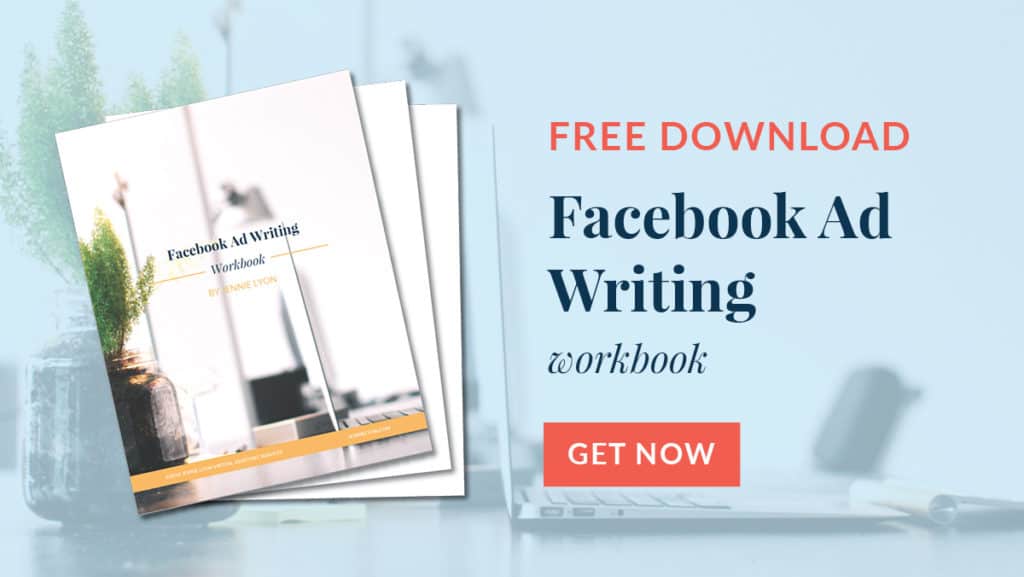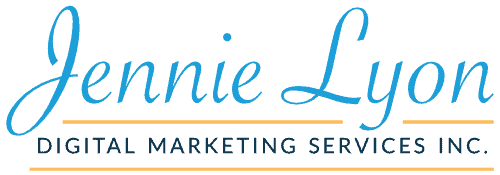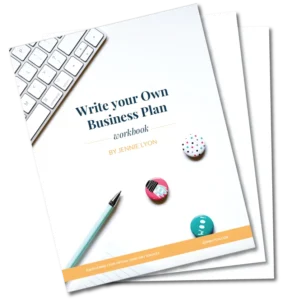5 Facebook Ad Strategies to Grow Your Business + Free Template
Gosh. Sometimes it’s baffling to think that Facebook was ever a social networking site for Harvard students when you look at the beast it has become now. As of 2021, it boasts 2.85 billion monthly users.
2.85 billion is a staggering number of people when you stop to think about it. And as a small business, it’s hard not to get excited by the prospect of all those people seeing your advertisement on the world’s most popular social networking platform. If I could sell 1 item for $1 to all of them, that’s $2.85 billion at month’s end; I’d be happy to retire with Jayson to a beach house on the mediterranean. Unfortunately, it’s not that easy.
That said, there are still plenty of ways small business owners like you can optimize Facebook advertising to help grow your business and maybe attract a fraction of that massive user base.
What is a Facebook Ad?
These paid advertisements are available to anyone willing to create them. If you’re on Facebook, you’ve definitely seen them in one form or another, either right in your face as newsfeed ads or just off to the right as a margin ad. Businesses have also begun utilizing the Facebook Stories function for advertising.
When Facebook first introduced advertising, margin ads were the pioneers. As the site grew and technology improved, “the algorithm” became a hot-button topic, and ads began to eerily seek us out, offering things we didn’t know we wanted until we saw them. Eventually, the newsfeed ads were introduced, which offer a better engagement rate due to how they’re integrated naturally into the way people use the platform. And the Facebook algorithm has since only gotten smarter.
What Do You Want to Accomplish?
Depending on how you want to use Facebook ads, they’re really user-friendly and offer flexible models for campaigning and cost. Margin ads are more affordable, but they don’t grab attention the way newsfeed ads do. You also have various goals to select from that Facebook uses to dictate how your ad is built and who sees it.
To that end, you’ll want to get specific about what your product or service offers the audience you seek based on the usual demographics. By determining that, you can decide if you’re creating an ad to raise brand awareness, convert browsers to sales, or simply engage with your audience through Messenger. Furthermore, you’ll want to figure that out because, depending on your goals, you may want to choose different pricing models, selecting between one that charges you based on an ad’s impression (amount of reach and relevance) or per-click. Both models have their merits, but you need to mind that marketing budget and use it effectively to get in front of the right faces!
Constructing Your Facebook Post
To make the biggest impact with your Facebook ad, you need to curate the content going into each one carefully. So, let’s break down each element and look over the specifications that’ll make your ad stand out!
Headlines
Headlines are crucial. If you don’t nail that headline, your ad will fall flat. If I’ve said it once, I’ll say it again; you need to get specific about what you’re selling. With Facebook ads, it’s not enough to market your website or your brand; your value proposition has to be something consumers need, that solves their pain points, and they can’t not click on! That’s what will boost your click-through rate (CRT) and drive customers to your storefront. So, you need to mention what makes you unique and do it concisely (40 characters max!) with catchy phrasing. I like to use CoSchedule’s subject line tester to evaluate my message for my posts and emails, so check it out!
Imagery
Next up, your imagery. While a catchy headline is excellent, using the right visuals is the most important part of your ad. Facebook’s algorithm favors images, meaning your message is more likely to be seen when it has a compelling, relevant image. It also takes up the most real estate in the construction of your ad. When considering the type of image to use, think welcoming, bright, high contrast, and incorporate your brand coloring. You can use stock photography, but make sure it’s in line with your overall messaging. If you’re selling dog treats but use a picture of a woman out for a jog that takes them to your puppy-filled post-click landing page, users are going to be confused.
Another option, if you’re able, is using illustration or curated photos you’ve commissioned for your marketing, which allows more control over the message you’re trying to send. Regardless of which form of image you choose, make sure it’s as high quality as possible. The recommended resolution is 1080×1080, so make sure you have a crisp, clear picture to present your audience. Nothing makes me question a business’ quality and commitment to their work than a low-resolution image in their advertising. It just looks sloppy!
Messaging
Finally, your message is all the clearer with great copy to back it up. You have room above your image, even on your graphic, and in the link description to write out details that can drive your Facebook ad home. With your link description, you want to get to the point (30 characters) and use active urgent phrasing. That is where it pays to advertise a specific product or offer instead of your website.
Addressing the audience directly by saying, “On Sale: Get 25% off NewPup Pops! 🐶” makes a bigger impact than “Visit our store for great dog food alternatives!” Make that call to action (CTA) as clear and appealing as possible! With your post text on newsfeed ads, you have a lot of room to expand your copy, but again, people don’t want to read a wall of text to find out what you have to offer. Stick to 125 characters and use social proof. These are things like testimonials or statistics that prove how great your product is or its need.
Where Do We Go from Here?
One part of many Facebook ad campaigns that most businesses fail to consider is including a post-click landing page. These essential lead magnets create a focused space for you to inform, attract, and convert your target audience. Here is where you can offer freebies, from e-book downloads to webinars to promo codes. It requires targeted copy and content, of course, but it makes anyone that lands there far more likely to buy what you have for sale, as it expands on the offer you made in your ad. According to AdEspresso, as of 2018, most Facebook ad users (69%) follow this process because it creates results!
Don’t Stagnate!
Too many people think that, once their ad is made and circulating, that’s it! They’re done!
Don’t fall into that trap!
Facebook offers a bevy of tools and analytics for users to review, even a cool A/B Testing feature. After you’ve let your ad run for a few weeks or months, have a look at how it’s doing. How big of an impression is it making on your target audience? What does Facebook’s relevance rating think of it? Are you getting a high or low CRT?
As for the A/B Testing, this lets you create variations of your ad. You make two with different sets of copy and imagery and compare to see which performs better. It’s worth the effort and investment to broaden your research to find out what works.
All the data is there for you to review and make changes to try and improve your advertising impact. But be judicious! Just because you can change doesn’t mean you need to. Don’t go tweaking every day. Otherwise, you’ll skew the analytics, and you’ll never know what did or didn’t work in a given period. Again, even if the numbers seem low, don’t panic, be patient, then change things up based on the trends you’re seeing.
To help with that, I HIGHLY recommend creating a social media calendar that lets you plot out post ideas and regular scheduling across all platforms. If you don’t know how to make one, I have a free template for a Social Media Marketing Calendar on my website. Download it, start plotting your strategy, and down the road, you can note what posts, ideas, and images worked and what didn’t with your Facebook analytics!
Don’t Overdo It!
The last little tidbit I have for you is to mind post frequency. When you set up your advertising on Facebook, you can adjust how often individual users will see your ad. It can be tempting to want everyone on Facebook to constantly see your picture of puppies happily munching on your dog treats, to continue with my example.
Now, shocking though it may be, people can even get tired of seeing puppies, which isn’t the fault of the puppies (or you!) It’s just, when they see the same image and copy over and over, they tune it out or even get annoyed by it. To avoid this, ensure you set post frequency to no more than 5 views per user. That helps keep it fresh and relevant, leading to a higher CTR. As far as costs go, if you’re budgeting for cost-per-click (CPC), the higher the frequency, the more you pay!
So, What Did We Learn?
Let’s review what we learned:
- Facebook ads are keyed to the algorithm.
- You need to build an advertisement that feeds the algorithm with content catered to your target audience.
- Determining what you hope to accomplish with your ad sets up the entire campaign
- Once you know your goals, you can build an advertisement that supports it.
- A headline needs to be succinct and catchy and selling something specific!
- A high-quality, bright and attractive image that’s in line with your brand and messaging.
- The copy also needs to be concise, show some social proof, and have a tantalizing offer in the link description.
- After people click on your ad, you need to direct them to a post-click landing page built specifically for your offer.
- Use the analytics Facebook has provided to monitor ad performance over time and adjust to make the best impact you can!
- Maintain a modest post frequency so you don’t burnout your target audience or your marketing budget!
Free Resources
Whew! While those posts may seem like small 1080×1080 squares, there is a lot that you need to consider and collect to optimize their impact. Remember, above all, that Facebook wants your business. True, the revenue from you is a drop in the bucket, but it still pays their bills, so use the tools they’ve provided. With a specific offer, excellent copy and imagery, and a clear strategy that you’re ready to review and tweak as needed, you can start to build some meaningful, eye-catching ads that will get your product or service noticed! Now, if you need some further guidance with creating great-looking ads, I have a great freebie for you! Head to my website and download my free workbook: How to Write Your Own Facebook Ads!

I also know that many small businesses don’t have the team or resources in-house to build the strategy, assets, collateral, and manage the campaign from start to finish. That’s where I come in! Reach out to me directly to get extra help from my virtual assistant team and me. We can build you stunning ads and even run the whole campaign for you if you want. I’d be delighted to give you a free consultation!
Links For This Episode:
WORKBOOK: How to Write Your Own Facebook Ads!
TEMPLATE: Social Media Marketing Calendar
Rate, Review, & Subscribe on Apple Podcasts
If you like what you hear on the podcast, please consider rating and reviewing my show! Woo Hoo! Click here, scroll to the bottom, tap to rate with five stars, and select “Write a Review.” I would love to hear what episodes you enjoy the most!
If you haven’t done so already, please subscribe to the podcast. I’ll be adding new content weekly, if you’re not subscribed, there’s a good chance you’ll miss out. Subscribe now!
























